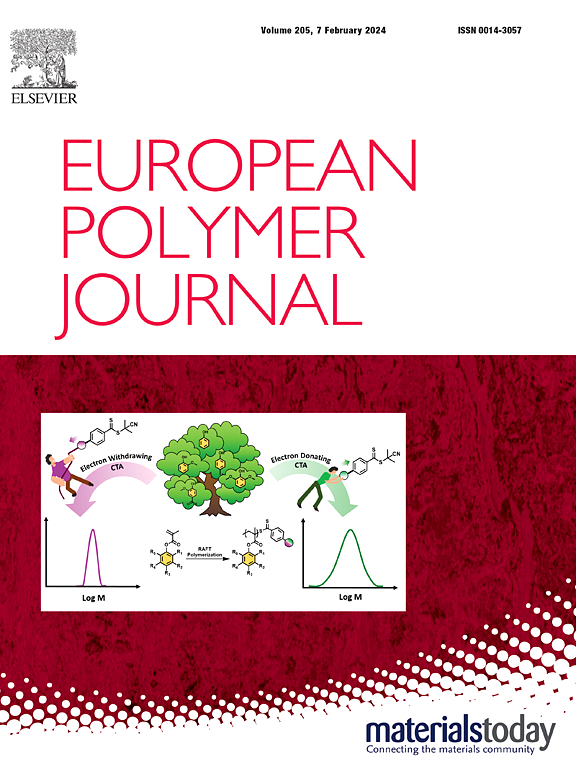Reactive blending of deliberately degraded polyhydroxy-butyrate with poly(lactic acid) and maleic anhydride to enhance biopolymer mechanical property variations
IF 5.8
2区 化学
Q1 POLYMER SCIENCE
引用次数: 0
Abstract
Poly(lactic acid) (PLA)-based materials, with e.g. automotive, packaging, agricultural, and electronic applications, still display a too high brittleness, inhibiting the full exploitation of biopolymers to replace abundantly applied oil-based polymers. Herein, a novel (reactive) blending strategy is therefore presented, in which deliberately degraded polyhydroxy-butyrate (dPHB) is mingled with PLA in the presence of maleic anhydride (MA), allowing plasticizing and grafting via radicals, e.g. formed by shear or the addition of dicumyl peroxide. For the comparison of the final properties, fused filament fabrication (FFF) is employed as a manufacturing technique. Based on the analysis of molecular and thermal properties, flow behavior, and grafting efficiency, it is revealed that blending with dPHB and not the original PHB, in the presence of MA, improves the processability with as extra advantage a sustainable method for PHB material usage. The bio-composite with dPHB and MA (75 m% PLA) possesses excellent mechanical properties, with specifically the elongation at break much higher than that of neat PLA, or a blend of PLA and PHB (and MA). The enhanced properties are due to effective dispersion of dPHB within the bio-composite and the crosslinking/chain extension with MA, opening the door to more sustainable materials beyond conventional PLA and PHB.

求助全文
约1分钟内获得全文
求助全文
来源期刊

European Polymer Journal
化学-高分子科学
CiteScore
9.90
自引率
10.00%
发文量
691
审稿时长
23 days
期刊介绍:
European Polymer Journal is dedicated to publishing work on fundamental and applied polymer chemistry and macromolecular materials. The journal covers all aspects of polymer synthesis, including polymerization mechanisms and chemical functional transformations, with a focus on novel polymers and the relationships between molecular structure and polymer properties. In addition, we welcome submissions on bio-based or renewable polymers, stimuli-responsive systems and polymer bio-hybrids. European Polymer Journal also publishes research on the biomedical application of polymers, including drug delivery and regenerative medicine. The main scope is covered but not limited to the following core research areas:
Polymer synthesis and functionalization
• Novel synthetic routes for polymerization, functional modification, controlled/living polymerization and precision polymers.
Stimuli-responsive polymers
• Including shape memory and self-healing polymers.
Supramolecular polymers and self-assembly
• Molecular recognition and higher order polymer structures.
Renewable and sustainable polymers
• Bio-based, biodegradable and anti-microbial polymers and polymeric bio-nanocomposites.
Polymers at interfaces and surfaces
• Chemistry and engineering of surfaces with biological relevance, including patterning, antifouling polymers and polymers for membrane applications.
Biomedical applications and nanomedicine
• Polymers for regenerative medicine, drug delivery molecular release and gene therapy
The scope of European Polymer Journal no longer includes Polymer Physics.
 求助内容:
求助内容: 应助结果提醒方式:
应助结果提醒方式:


